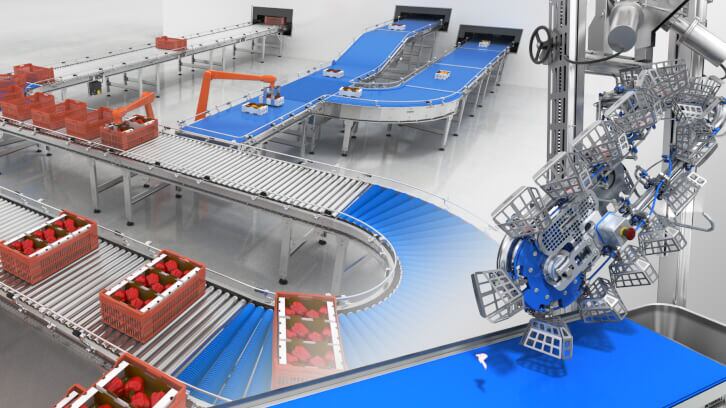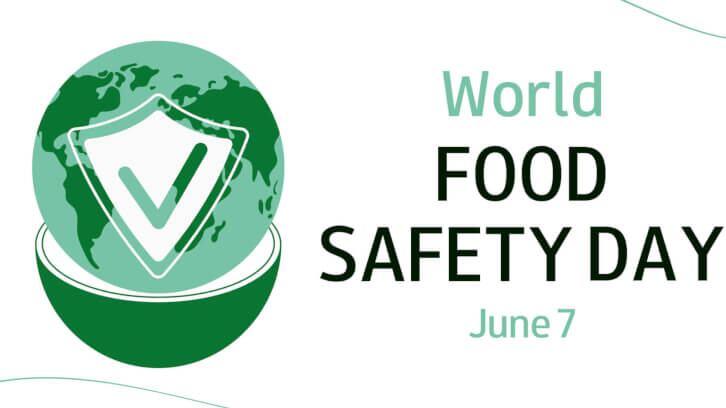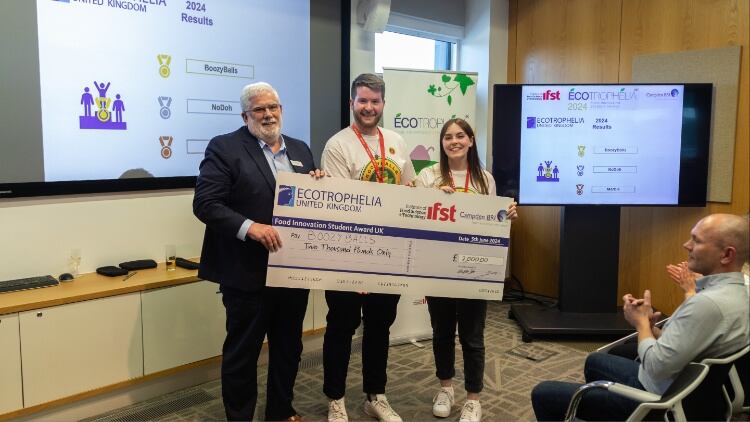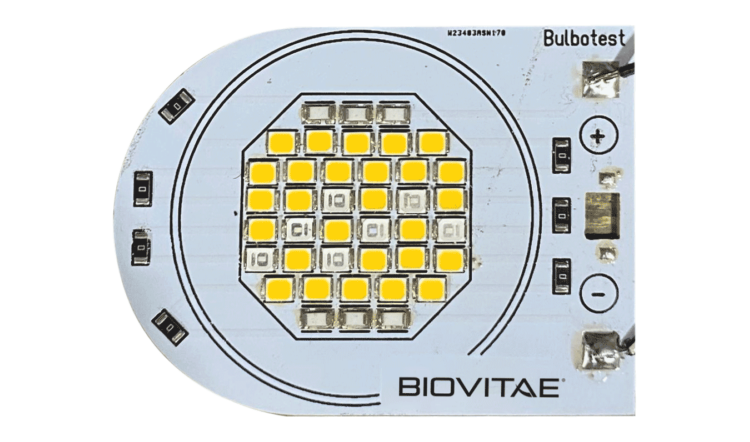Globally, one in 10 people fall ill every year as a result of eating contaminated food, with more than 200 diseases caused by their consumption.
Whilst the Food Standards Agency’s March 2024 Consumer Insights Tracker shows confidence in the UK’s food safety has risen by 4% since last year (July 2023-March 2024), the challenges facing the nation’s food providers to deliver safe food are undoubtedly becoming more complex.
“You’ve got more regulation, both national and international; retailers with more stringent codes of practice, packaging becoming more complicated, line speeds getting faster,” listed Kati Hope, Mettler Toledo’s global key account manager for production inspection.
“It's a more complicated environment.”
The team at Campden BRI agreed. Speaking with both Caroline Goodburn, global safety and quality team manager, and Andrew Collins, global safety lead, they explained that disruption has become a familiar foe with many faces.
Events such as climate change are threatening both agriculture productivity and food safety, with heavy rainfall and flooding opening foods up to an increased threat of mycotoxins, alongside damaging yield numbers. This has been further intensified by disrupted trade flow, due to complicated, new red tape and on-going geo-political instability.
Chinks in the armour began to really show during Covid, exposing the UK’s fragile food system – notably, adulteration cases increased by 30% globally in the first half of 2020 compared to the same period in 2019.
These cracks are growing bigger still, as we continue to grapple with what has been termed ‘the permacrisis era’.
Sneaky food fraud
Today, food fraud accounts for up to 25% of food safety incidents; and, according to the Food Authenticity Network, costs the global food industry an estimated $40bn annually.
While malicious attacks are certainly not an area to forget when pulling together a food safety plan, they are often more conspicuous, whereas food fraud can often slide more easily under the radar.
This latter type of food crime can include theft, illegal processing, misrepresentation, falsifying documents, substituting an inferior substance or product, adulteration, and waste diversion.
Whilst food fraud might not sound life threatening, the industry will remember all too well the devastating consequences it can have, namely the 2008 melamine infant formula scandal.
As Campden BRI’s head of membership and training, Bertrand Edmond, aptly put it during the launch of the business’ new food crime e-book: “We live in challenging times so we must be aware of the potential triggers and drivers for risks such as adulteration and other fraudulent activities that may affect our supply chains.”
The aforementioned resource, ‘Beating Food Crime: How to defend your business against the threat of food fraud and malicious attacks’, was recently published and offers insight into new methodology to protect businesses against food crime, alongside advice on crisis management should the worst happen.
Regulation and compliance diversity
Zoe Richards, business solutions director at Trustwell, concurred that one of the most challenging aspects is managing the complexity, integrity and variability of global supply chains.
“Guaranteeing the integrity and traceability of food products across different regions, each with their own regulatory environments and compliance requirements, presents a significant challenge to many businesses,” she said.
For Richards, businesses need to focus on integrating comprehensive food safety practices into every level of the supply chain to ensure they are championing a food safety culture.
“This includes continuous training for all employees, collaboration with suppliers who prioritise safety, and leveraging technology to ensure compliance and traceability,” she explained. “It’s a food manufacturer’s job to empower its employees to report potential hazards and have proactive attitudes towards food safety to foster an environment where safety is everyone’s responsibility.
“Regular communication and sharing of best practices across the business is what really forms a culture that prioritises consumer safety and quality product delivery.”
And when it comes to suppliers, look for those that “demonstrate robust food safety management systems, transparency, and strong ethical standards”.
“It's also important that they are adaptable to changing regulations and capable of maintaining the quality and safety of their products despite external disruptions,” Richards added. “Strong and proactive communication is another essential trait to detect any potential issues and get them promptly addressed. Maybe most importantly, they should be able to provide comprehensive documentation of their processes and have traceability systems already in place before a manufacturer begins working with them.”
The experts at Campden BRI agreed: “Food manufacturers must prioritise building long-term relationships with suppliers based on transparency and honesty.
“These relationships foster trust and collaboration, allowing both parties to work together to deliver continuous improvements in product quality and safety. While many contracts may be short-term and price-driven, manufacturers should prioritise suppliers who demonstrate a commitment to upholding rigorous standards and are willing to invest in measures to ensure integrity throughout the supply chain.”
Plugging the skills gap in food safety
While the idiom ‘too many cooks spoil the broth’ certainly rings true in many cases, the last few years of challenges have left the food sector with hardly anyone to start even a simmer.
“With labour shortages, the food industry has lost vital talent and, within that, health and safety knowledge and expertise,” said Hilton Campbell, managing director for Interroll UK, the material handling provider.
“Brexit not only altered the regulatory framework for food production in the UK, but also affected labour markets and customs processes which complicate both import and export activity,” added Richards. “The best way to combat these difficulties is to embrace technologies that provide tools to enhance visibility and control over the supply chain, allowing for quicker responses to changing regulations and market conditions.”
Hope talked Food Manufacture through some of the innovations Mettler Toledo has developed to this end.
Among the array of weight checkers, X-rays and metal detectors in its collection, she highlighted the X2 Series of X-Rays. She depicted this as “an affordable range” which the business has made “for all budgets”.
“We’ve also included some tools and features that help customers combat rising costs, help them enhance their productivity and also improve product safety.”
To aid that, the X2 Series features 30 algorithms that run in parallel, continuously checking for what Hope described as “the hardest to find contaminants”.
When probing her further on what that comprised, she explained that certain attributes, such as high salt content or contaminations like calcified bone, can be more difficult to ‘pick up’. Broadly speaking, this is to do with the varying densities of ‘bodies’ and how they show up on the image – lower densities will offer less contrast, so they’ll be less obvious to the naked eye.
The X52 within this range features Advanced Material Discrimination Software that takes two images of the product and processes them to remove the ‘background’ and highlight low-density contaminants in products with high contrast differences.
Moreover, with the uptake of automation becoming a more popular option to alleviate labour gaps, Hope was keen to add that the business has also developed tools suitable for high-speed lines.
“We've got solutions that can run up now to beyond 900 packs a minute!”
Food’s biggest bugbears
Chemicals, bones and glass shards aren’t the only physical ‘nasties’ that can make their way into food. Food facilities are also a goldmine for all sorts of critters and rodents.
“Food manufacturers constantly have to deal with preventing pest introductions from the surrounding area where rodents can gnaw through the fabric of the building or when flying insects enter through open doors and windows. Additionally, their raw ingredients and other deliveries can bring pests directly into the site and they quickly can establish themselves,” explained Sophie Thorogood, technical training manager at pest control provider Pelsis.
In this sphere, Thorogood believes food moths and beetles to be the biggest nuisances.
“One of the most challenging is detecting food moths and beetles whilst they are in their larval stage within contaminated products. These insects are very small and can camouflage themselves well against the food products. Furthermore, in large shipments of ingredients with low densities of insects it would be similar to looking for a needle in a haystack to find any evidence of the pest.”
In a similar vein to Richards, Thorogood believes technology is the way forward: “One of the most exciting developments in pest management is the use of artificial intelligence to count and monitor for pests.
“Primarily these are within insect light traps and can be set up to send notifications for a single flying insect appearing on the glueboard. This allows staff to act promptly to investigate the source of the insect and take action for a more successful management.”
Additionally, solutions are also available which record the number of insects caught. This illustrates data trends in declines or peaks in activity and when these occur (e.g. certain times or events such as delivery).
Speaking on the topic of integrity and suppliers, Thorogood gave the following advice: “An up-to-date record of their pest activity on site should be available from suppliers and partners to show they take pest management seriously.
“If they are not monitoring for pests this indicates, they may not be aware of when pest activity is happening at their site. Another useful thing to check for is their quickness on completing the recommendations set by their pest management provider, there should be a record of when a recommendation in housekeeping or proofing was given and there should also be a date of when it was completed. If many recommendations – especially quick win – are not performed, this indicates they might not be a top priority for that site.”
Whilst the traps, AI and X-Rays have you covered on some contaminants – there are other safety issues to contend with.
Managing microbial contaminants
For Interroll’s Campbell, the biggest hurdle facing manufacturers today is microbial.
“Microbial contamination, such as from bacteria, viruses, and parasites, can be particularly challenging for food and drink manufacturers,” he said.
“Bacteria like Salmonella and viruses like Norovirus are often not detected until the finished product testing stage. This delay in identifying contamination can allow it to spread and lead to larger-scale outbreaks.
When it comes to recalls, Campbell believes that “prevention is better than cure” – so having equipment designed with this is mind is, quite frankly, a no-brainer.
“Interroll offers a range of conveyor drum motors designed specifically for the food industry. These products feature non-toxic, non-absorbent, and corrosion-resistant stainless-steel construction that prevents microbial growth and chemical contamination. They also have smooth, easy-to-clean surfaces with fewer crevices where contaminants can accumulate.”

While Campbell emphasised the importance of hygienic design in new kit, she added that proper sanitation is vital alongside the ‘make-up’ of the machine.
“Even a cleaned conveyor can still contain microorganisms, so proper sanitisation is crucial to avoid product safety issues that could lead to recall.
“It’s equally important that all conveyor components, especially elastomers or plastic components, are resistant to cleaning agents. Interroll drum motors offer ingress protection of IP69k which means they can be cleaned with water jets up to 80 Bar pressure and a temperature of up to 80°C. Nevertheless, it is recommended to clean food applications with low-pressure water jets, up to a maximum of 20 Bar pressure to avoid the creation of aerosols. Aerosol spray generated by high-pressure water jets can spread micro debris, bacteria and pathogens through the food production environment.”
It would be difficult to argue against the statement that we’re in difficult times, but it’s also true that the sector is at its most advanced state yet.
The solutions readily available to manufacturers are second to none – but the vast number of options can often be a challenge in itself.
But there is Hope – quite literally – who offered one last nugget of advice on this topic: “There's that phrase that if you buy something that's not quite right for your situation that it will be a big cost. You need a supplier that has proven technologies.”
As they say, the proof is in the pudding.





